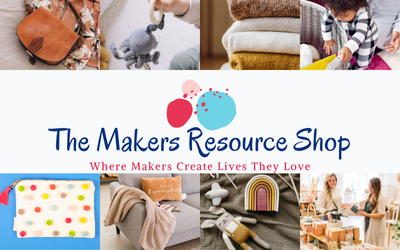
Batch Codes
This is a popular topic this week, so let's work through it together!
For children's products the CPSC requires a few things to be on the label. Per the CPSC's website:
-
Manufacturer or private labeler name;
-
Location and date of production of the product;
-
Detailed information on the manufacturing process, such as a batch or run number, or other identifying characteristics; and
-
Any other information to facilitate ascertaining the specific source of the product.
.
.
-> Manufacturer or private labeler is you. This includes if you import things from elsewhere, your name should be on the label. The idea here is that the consumer (the person using the product) can find out who to contact if they have a question (or want to purchase more!).
.
-> Location is where the product is made. Ideally, this is the city and country (which works with the Country of Origin requirement from FTC and CBP). However, the CPSC does allow for the city to be identified with the batch code. The idea here is that if there is an issue with a product, they know exactly which facility it was made in, that is, who/where did the issue stem from. Now. Most of us here are single person shows, right? So that means if you make it part of your batch code, you technically don't have to add anything. If you hire contractors to help finish your products, though, this is where you may add a letter code or number code to distinguish this information (TN for a contractor in Tennessee or -1 for a contractor in Alabama).
.
-> Date of production (commonly you'll see DOM here as 'date of making'). You have options here. The idea is that if there is an issue, you can narrow it down to a certain time frame instead of having to deal with a whole year's (or lifetime's) worth of product. The CPSC perfers Month/Year because it's the most narrow aside from the full date, but also accept season/year and quarter/year or other variation of signifying the range of production.
.
-> Other information to ascertain the specific source of the product. The CPSC considers information to be ascertainable if marked with a code and website address where all the required information can be found, provided that a consumer without internet access can know who to contact. I recommend your shop's website because there may be similarly-named businesses within your industry and because it's good branding.
.
-> Batch code. This is where the fun begins! For this, the CPSC literally does not care how this is done. They focus more on the date of production than the batch. The batch is more for you to further narrow the scope of affected product and help the current consumer know if their product is involved in the recall. So, a batch could just be the date. The batch could be a letter code, number code, color code, combination of some or all. It could be the SKU or Model even.
What I recommend for the batch code is to look at your product line and figure out what the riskiest part of the product is. For example, if you make fabric clothing with snaps, it's actually the snaps that have the highest risk for issue. So, in this case, I would use the date of production and add the KAM code for the KAM snap(s) used. 032022-B1 for the red KAM snap for example. Maybe you used zippers and they aren't nicely coded like that. Perhaps you then have SP22-5 with the '5' standing for the Olive color of nylon-teeth zipper. If you don't use anything other than fabric, then Q122 may be all you have for your batch and that is completely fine.
.
-> Recalls. When a recall happens, it will include a lot of information, information that most of you already have just doing what you already do. The information may include:
-
Image(s) of the affected product
-
Name of product
-
Hazard
-
Remedy
-
Recall Date
-
Date of production
-
Batch, model, SKU, etc.
-
Where sold
-
How many sold/distributed
-
Incidents/injury
-
Where made
Here is an example:
(March 2022)
.
.
Keep in mind that we also have a unique position in commerce. We are generally more face-forward than larger companies. That is, we have individual's emails, we tend to know many of our customers by name (and vice versa), and we know our products more deeply. With all of this, an issue could easily be remedied with a customer-level recall where you email those you know purchased the affected product directly.
.
There really isn't a 'wrong' (or 'correct') way to do any of this as long as the consumer can easily know who to contact if there is an issue and know if they are involved in a recall. The more detailed the information, the more narrow the scope of product being remedied in an issue which can save you a lot of time and money, BUT you may spend more time in the manufacturing and bookkeeping process trying to have such detailed information on the tag (let alone trying to figure out space). It's ok to have minimal information on the tag as long as you have the details in your records.
.
.
Good luck! (And don't forget to breathe!)
...
.
